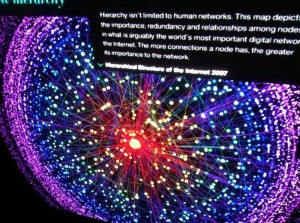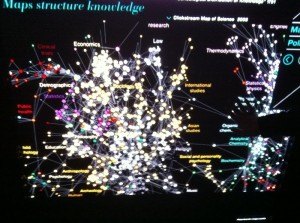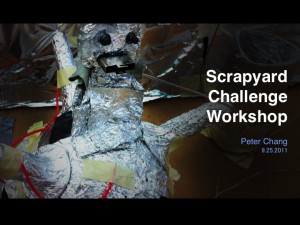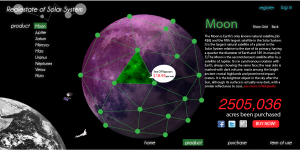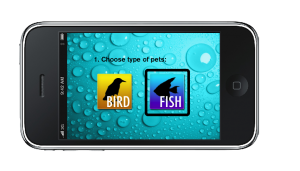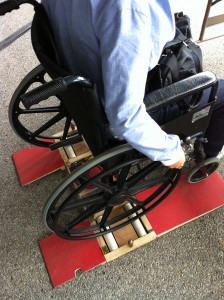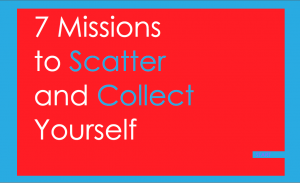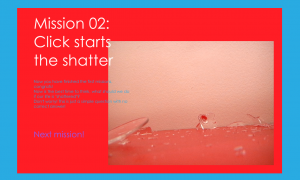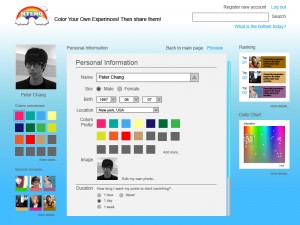Interaction Relabelling and Extreme Characters: Methods for Exploring Aesthetic Interactions
Gaver, Djajadiningrat, Frens
In this article, the author truly gives designers a better method to examine and execute the ideas of creating interactive works. The first means mentioned is interaction relabeling, which enables us to think single item differently according to the object’s characters. The main point here is to rethink how an object can be related to the design product. If the two are far more different from each other, it gives us a better chance to think creatively. I found this very helpful because we usually get stuck while brainstorming due to constrains of aiming missions. However, the most creative concepts always come out of nowhere. In other words, this can expand our range of thinking unexpectedly but meaningfully. The other means called extreme characters also intrigue me because we seldom implement this in our design practices. By putting extreme roles into our target audiences, every step taken after might go wild. But according to the author, we can get rid of the stereotypical outcome that we try to avoid through this process. But my question here is how are we going to choose the extreme groups from people? Are the one chosen comes randomly? Or we should build up rules to select them? I definitely think this is what we need to think about if we truly want to follow this method to execute our future projects.
Hertzian Tales
Anthony Dunne
Technology now is one element that human can not live without. And considering of the cycles that how humans are utilizing electronic object is a ordinary but essential question we should ask ourselves, just like the author does. As Clive, our design for this century lecturer, claims in his argument, people now are taking a step back to technology. It does not mean that we stop using electronic objects and start to live like aboriginal people. The reason he said so is that although human beings now are closely attached to technology, we actually do not think or deeply engage to the objects we are using. We are addicted to smart phones and internet, and somehow we can not imagine life without them. However, those devices generate an environment that everyone should get involved or then will be eliminated. The truth is, no one really think deeply about those objects before start using them. In my opinion, that is why people get so tired of one thing and need to buy another newer one. Clive offers a solution about “playing” with the object. He believes that through playing with products, we can have ourselves more engage and bond to them more. I would say the relationship between technology and human is important. If we connect ourselves with technology in a social cultural way, then technology will no longer be just an object but an emotional representation of a strong relationship, which is more meaningful than it originally is.
The Design of Everyday Things
Donald Norman
It is always easier to criticize than to compliment. I agree with the idea that has shown in the essay indicating that people should think about designs before they physically use it. However, sometimes people go the extreme. When we buy a super simple design object, we think it is to simple and want more services from it. When buy a complicated design like a smartphone, we criticize it being to distracting that we can hardly find what we really want. If we are being to aggressive, this will be the result. However, we know that every product has its own target audience. Some people’s favorite feature of one product can be other’s pain in the ass. My point here is that before we make everything into “simple” design, we might need to think about who is going to use it. If the target audience is an aged group of people, then the design should be easy and straightforward, and vice versa. I do like the idea quoted in the article saying that every product should be thoughtfully designed, and I believe it is our responsibility as designers. If people stop complaining, then probably we have done something right.
Why We Need Things
Mihaly Csikszentmihalyi
Before focusing on the content of this essay, I think the title is a usual but broad question that we can ask ourselves. Why do we need things? There are definitely no exact answers. What I believe in is quoted in the article is that things we possess define who we are. Of course there are things not necessary toward our life, but here is a psychological side of human beings. To nurture our mentality, objects are needed. A letter in a bottle can recall one’s 10 years memory. A teddy bear can be a representation of an intact family. What we are discussing now here in DT is more focusing on the manipulating technology with human behavior. However, there is another side of design that can be simple but touching. Maybe it is not that “cool”, but meaningful. I definitely think that some things around us are neglected by its purpose, but there are also things essential to our existence.
The Computer Revolution Hasn’t Happened Yet
Alan Kay
The revolution of computer is clear and obvious. However, there are still some reasons that can deny it, just taking a different aspect to assess the whole process. In my opinion, I think the change now is too massive that sometimes we don’t feel we are changing by keeping up spontaneously. For most of the generation born after 2000, it is definitely hard for them to imagine life without computers. It is also difficult for their children in the future to live without technology. However, it is the change we need to adapt to. And we still can not take away the credits from those pioneers. But the point here is that can anyone predict what will happen next? If the answer is no, then what are the steps we should take to get involved and define ourselves in the future?
What do Prototypes Prototype
Houde and Hill
Reading this essay, I found it extremely helpful. It is helpful in a way that you need to practice the principles into your own experience then you will feel it. We all know that prototype shouldn’t be just a pretty model that duplicate the final look of one product, however, sometimes we still get caught up in such situation. The main thing here is that before you start building a prototype, you should always ask yourself why you are building this and what might be essential throughout the process. In the three dimensions of prototype, role, look and feel, and implementation, functionality is my first concern, which is always neglected in design process. While creating a new piece of work, I sometimes focus too much on the look of it in terms of my graduate school background. Nevertheless, it is not always the most important part of the work. Frankly speaking, it is always not after I got into DT. So the biggest challenge here for me is that how will I get through the limitations of graphic design but still has the original sense of aesthetics. As long as knowing more about interactive design, I believe more practices make perfection, and I definitely think this also apply to projects that involve human interactions.






